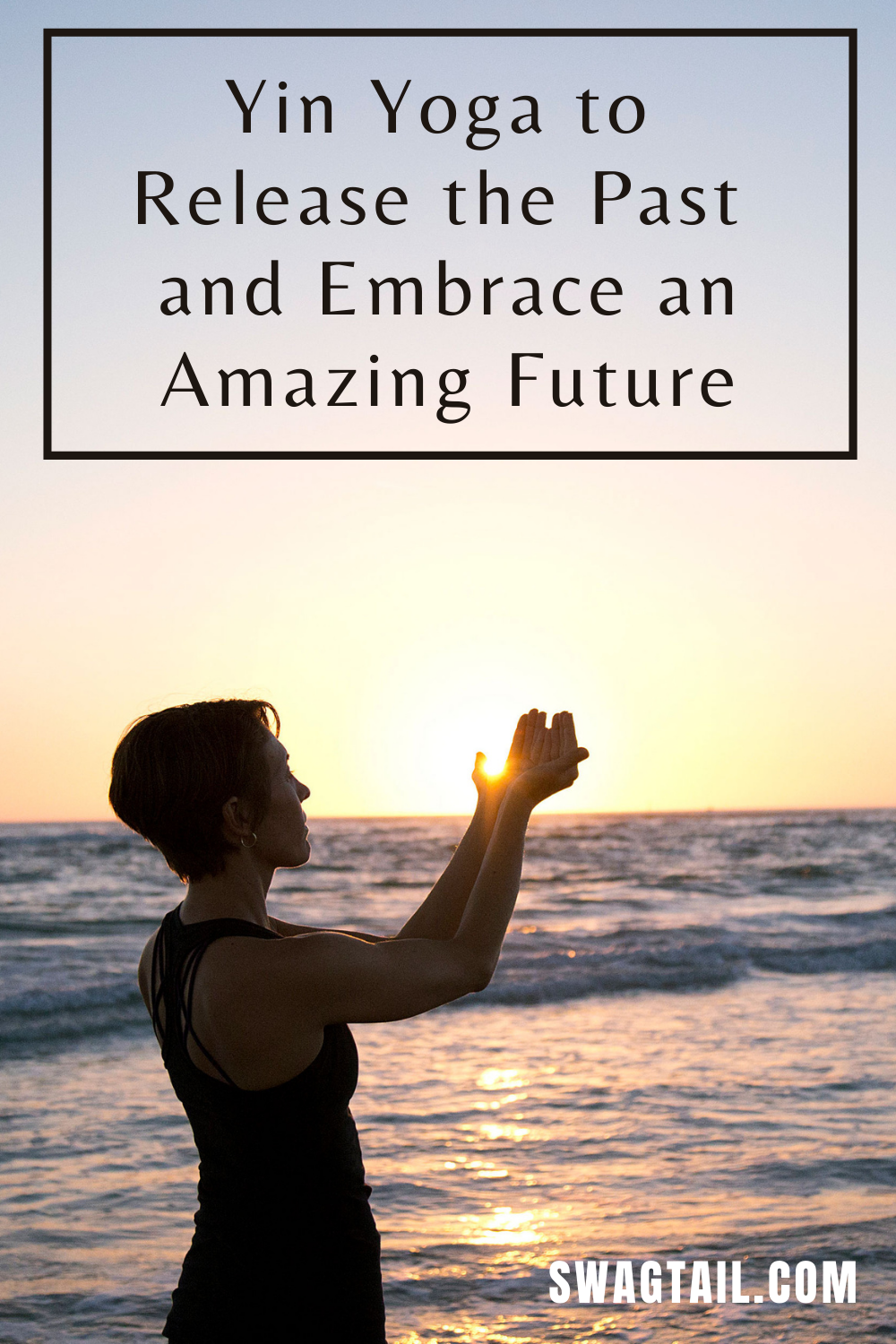 Life is an ongoing stream of events. Some you enjoy; others that cause strain or stress. Yet in order to live vibrantly, you must release the past. You need to let go of trauma or negative emotions — both of which get stored in the body. This yin yoga class guides you through deliberate postures to do just that, giving you the clarity and freedom to embrace an amazing future.
Life is an ongoing stream of events. Some you enjoy; others that cause strain or stress. Yet in order to live vibrantly, you must release the past. You need to let go of trauma or negative emotions — both of which get stored in the body. This yin yoga class guides you through deliberate postures to do just that, giving you the clarity and freedom to embrace an amazing future.
As many of you know, I love to golf as well as teach yoga to golfers.
Many times during a round, you find yourself hitting an errant shot. You miss the fairway at best, or you hit the ball out of bounds at worst (gaining two unwanted strokes in the process).
This can be traumatic. Your mind can get caught up in the struggle to get back on track. Your body can get tense with the stress of the incident. This can lead to more inconsistency of your swing and even more poor shots in your round.
I’ve had this happen and I’ve watched other golfers completely spiral downhill in their game, too.
To avoid this from happening, you’ve got to release the past. You’ve got to let go of the bad shot and refocus back in the moment. I teach this through the PIVOT method.
If you can’t get back into your zone as you’re playing, or after any stressful incident in your day, you can always use yoga postures to help. This yin yoga class does just that. It will walk you through deliberate postures to liberate you from the past and give you capacity to start fresh again.
Photo Credit: Ember and Earth Photography
RELEASE THE PAST BREATH BY BREATH
In the book, The Body Keeps Score, Bessel van der Kolk explores the ways in which trauma literally reshapes the brain and body. Joe Dispenza seconds this with his findings about how body cells memorize thoughts and emotions.
Basically, any negative emotion (no matter how strong in nature) can be stored in your physical tissue. This could be frustration from an argument with a family member. Or it could be horrific pain or fear from a more intense situation, like a car accident or physical abuse.
These memories then become the lens through which you view yourself and others. If this information remains the programs through which you operate, you stay in survival mode. This means the sympathetic nervous system is dominating and chronic stress ensues. Unfortunately, this leads to greater fear, tension, and distrust.
So how do you release the past?
How do you let go of unwanted information stored in the body?
Be present in the moment on your yoga mat. Focus your attention on sensations of the body without judgment. Deliberately release tension breath by breath as you remain still. And as you assume these yin postures, you create new space in that cellular tissue. In fear’s place, you can restore appreciation. You can bolster self-trust and build a foundation to trust others, too.
The best part is that you don’t have to revisit any of that old trauma for this letting go process to take place.
CREATE AN AMAZING FUTURE
Before we dive into the yin yoga poses to release the past, I want to remind you about something important. When you take something out of your experience, there’s now a void. And you get to decide what you want to put in that space.
That’s where setting an intention comes into play.
It helps to have a clear picture of what you want to experience in your life instead.
- What kind of person do you want to be?
- What elevated emotions do you want to permeate your life experiences?
- Can you imagine what that vibrant future might look like?
Again, keep an attitude of curiosity as you rest on your yoga mat in this practice. You don’t need all of the answers right away. Your open mind will allow the right information to flow to you at the right time. Simply welcome those fresh ideas and be willing to receive new thoughts.
As Brene Brown says in her book Rising Strong,
“Curiosity’s reason for existing is not simply to be a tool for acquiring knowledge, it reminds us that we are alive.”
GET READY TO PRACTICE
Before you start this sequence, I suggest you have the following props on hand:
- A bolster
- Two blocks
- Warm layers
The rest of this blog post outlines the asana(s) taken in class. You can also get on your mat and practice with me in the video below.

(1) START IN STILLNESS
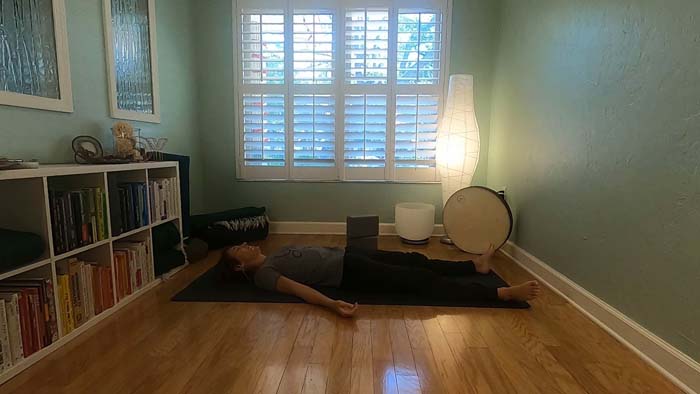
Purpose: Begin this practice with a period of deliberate stillness. This amplifies the sensations in the body at the present moment. It also gives you clarity about your current mindset. Notice what thoughts come to mind and your attitude toward your practice. As you breathe consciously here, you transition from the previous experience of your day. You can then enter your yoga practice with more purpose.
Length: 3-5 minutes
(2) SUPINE TREE POSE
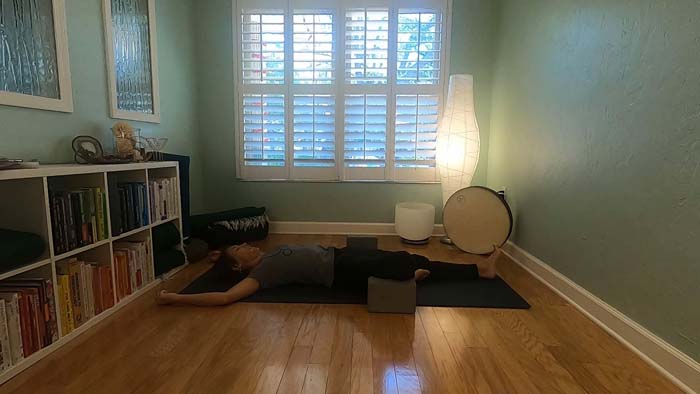
Purpose: The kidney, spleen and the liver meridian have segments that run up the innermost section of the thigh. As you open the groin in this supine tree pose, you increase the flow of energy in this region. This opens up the doorway to look inward. It also boosts your concentration, stamina, and personal vision.
Length: 3-5 minutes each side
Additional Notes:
- Place a block under the bent knee, if needed, so that the pelvis can remain in a neutral position the entire time.
- Take any arm position that is comfortable (by the side, out at a T-position, or in a cactus shape with elbows bent)
- Pause in savasana between sides to observe the differences.
(3) RECLINED BUTTERFLY
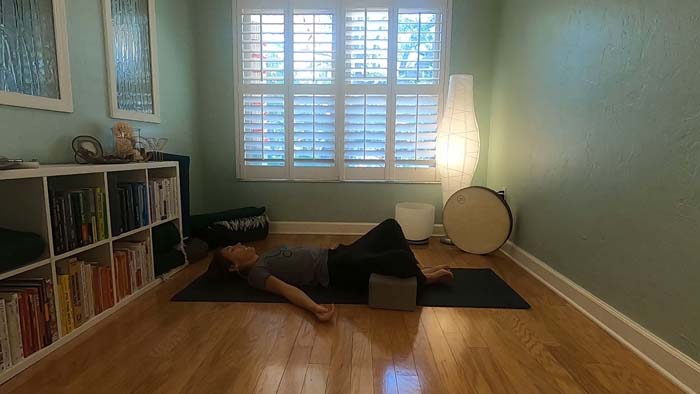
Purpose: Now that you’ve opened each side of the groin independently, you’ll do so together in this reclined butterfly posture. The best part is that the support of props beneath you will be a real, physical reminder that you are well on your way to embracing your amazing future.
Length: 5 minutes
Additional Notes:
- Place props under your knees or thighs to make this even more like a restorative posture.
- Find the best arm position to allow the maximum capacity of breath to move up both sides up the body, even up underneath the armpits.
- Rest in Savasana once done to observe new sensations in the lower portion of the body.
(4) TIPSY FROG
Purpose: Tipsy frog, also known as half frog, is yet another way to open the inner groin region. This can further amplify positive emotions such as satisfaction and gratitude — two great ingredients to fill the void that occurs when trauma is removed from the body. Resting on the elbows here also allows you to open the heart and the act of gravity can help create space in the upper spine and hip region simultaneously.
Length: 2 minutes upright, 2-3 minutes down flat (with the head turned in the opposite direction from the bent knee)
Additional Notes:
- Place a rolled blanket under the abdomen to make this a more accessible backbend.
- Stay with the forehead on the floor the entire time, if needed.
- Pause in a symmetrical, prone position before moving to the second side:
(5) FULL FROG
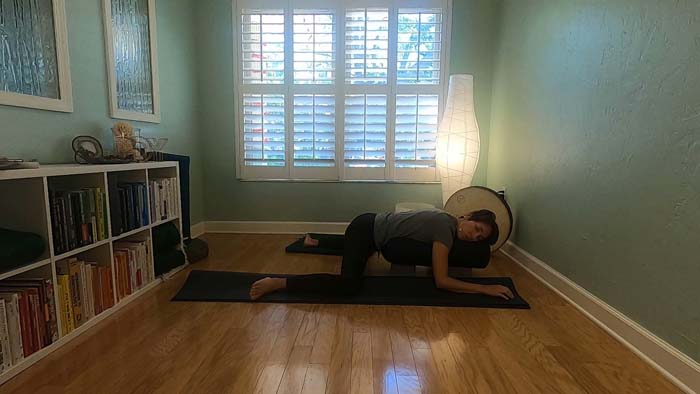
Purpose: Frog is a deep groin opener, which allows lots of prana and qi to move throughout the hip joint. It’s also symmetrical. The best part is that when you have the hips in the same line as the knees, gravity can work its magic to elongate adductor muscles of the hip even more.
Length: 5-7 minutes
Additional Notes:
- Move the hips forward of the knees to avoid any painful compression in the hips.
- If your hips are further away from the floor, like mine in this position, then I highly suggest placing a bolster and/or blankets under the torso. This will allow your pelvis to relax more here.
- Blankets under the knees can be another nice support here as well.
- You can also remain on your forearms here. Just be sure to continually relax your shoulders, head, and neck throughout your time in the pose.
- Keep the feet flexed to protect the knees.
Counterpose: Slowly return to a wide-knee child’s pose and give yourself a break before moving on. I recommend at least 30-60 seconds.
(6) RECLINED SHOELACE
Purpose: This posture releases tension in the low back and elongates the tissue of the outer hip. Since many of the previous poses opened the inner groin, reclined shoelace starts to balance out the body. This physical equilibrium helps release the past (stored in the cellular memory). The spaciousness then provides room for new information to take hold.
Length: 3-5 minutes
Additional Notes:
- Keep a simple cross at the knees and hug the kneecaps only to make this easier.
- Move the hands midway down the outer calf region to make it more challenging.
- Grab the outer edges of each foot, keeping the feet flexed, to intensify this pose even more.
- Try to relax the shoulders and arms as much as possible while here. You can also sustain this position at a wall to take the arms entirely out of the equation.
(7) SUPINE TWIST
Purpose: The previous poses started to alleviate low back tension. Now, you can take this openness into a twist that targets more of the spine. One additional benefit of doing this at the wall is that the bottom of your feet have contact with a surface. This can increase your sense of groundedness.
Length: 5 minutes each side
Additional Notes:
- Use props to make the pose accessible. You can place blankets under the bottom knee, or put a block between the knees, to make the posture more comfortable.
- Melt the backside of both shoulders on to the ground.
- Cactus the arms to release the past, let go of tension, and add more energetic flow into the heart and shoulders.
(8) REPEAT 6 & 7 ON THE SECOND SIDE
Purpose: Restore balance to the body and mind by repeating the reclined shoelace pose and supine twist on the second side.
Length: Take the same amount of time in each pose on the second side.
(9) SAVASANA
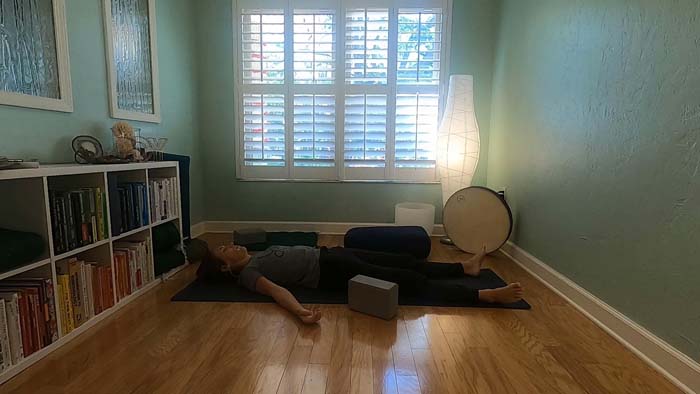
Purpose: In this yin practice, you were able to release the past and create new space in the body. Savasana allows you to absorb these changes. In this stillness, you welcome in your amazing future. You become a magnet for the best and highest good to flow to you. Just make sure you are as comfortable as possible. This reminds the body that no strain is necessary to bring your dreams into reality.
Length: 5-7 minutes
Additional Notes:
- You can pair this class with any of the class themes to build strength and resilience in the body. This leaves your students encouraged in their practice and gives them a positive point of focus as they move into the next segment of their day.
PUTTING IT TOGETHER
In order to stay healthy, strong, and embrace your amazing future, you need to let go of old mistakes. You need to release the past and create space to start anew. Yoga is a practice that helps you do this. This yin yoga class, in particular, holds poses for longer periods of time so the cells of the body can recalibrate and your mindset can shift from one of fear into one of embracing your potential.
Take Action Now:
- Join me on the mat for this yin yoga class.
- Share it with your students, whether you teach an entirely yin class or you weave elements of it into your active flow sequences.
- Discover even more ways to get quiet with a meditation practice. Our 3H Project starts March 1st, and you can enroll now to win prizes and get support as you start meditation at home.


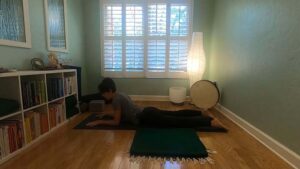
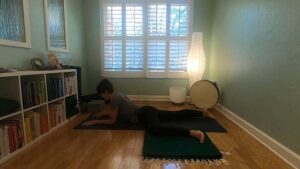
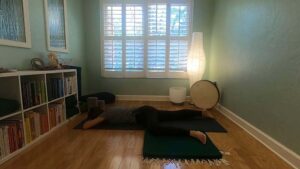
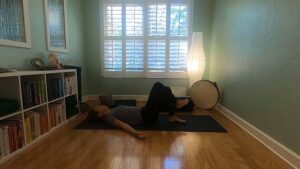
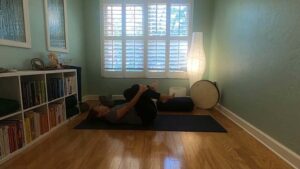
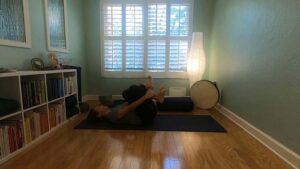

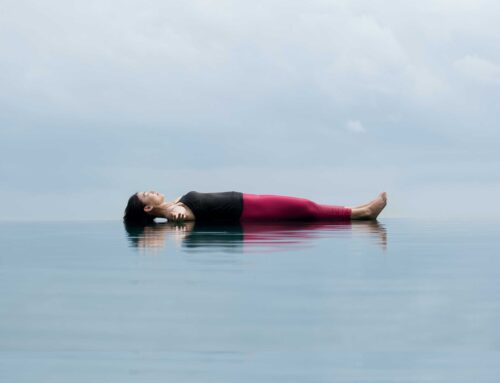

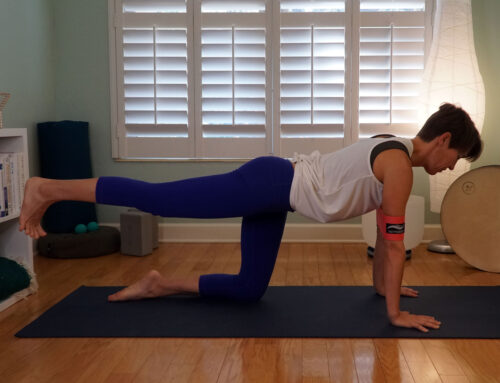
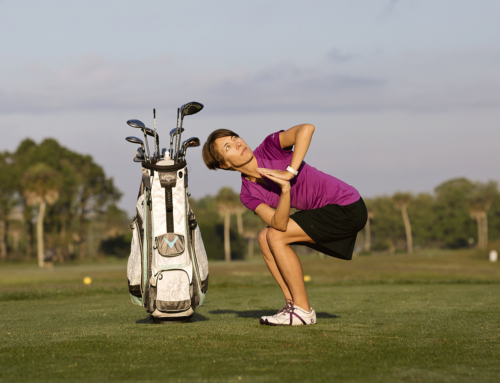
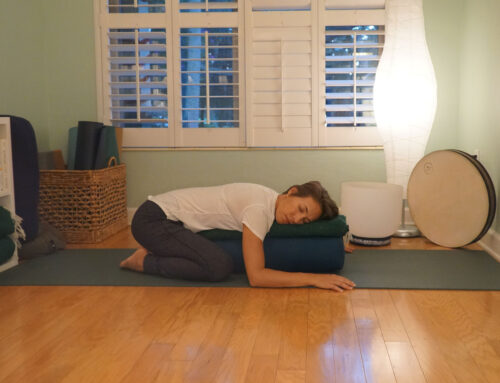
Kim – thank you for sharing this beautiful practice – It came at just the right time
I appreciate your site and the passion and knowledge you share
Hi Carmen, I’m so glad you enjoyed the practice! It’s one of my favorites.
Thanks, too, for being a valuable contributor in our Swagtail community!
Please let me know if you have any special requests for sequences or topics moving forward.